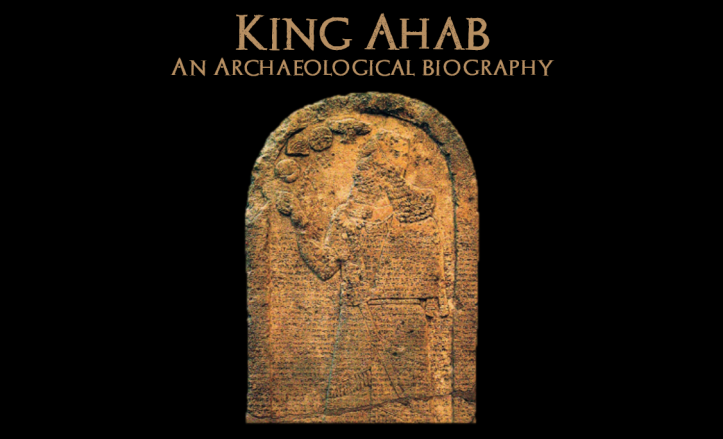
In our series of bioarchaeographies, we’ve alternated between Old Testament people, such as Tiglath-Pileser III, Nebuchadnezzar, Cyrus, Shishak, King David, Ahaz, Hezekiah, and Omri, and New Testament figures, like Caesar Augustus, Quirinius, Herod Agrippa I and II, Herod Antipas, Pontius Pilate, Gallio, and Sergius Paulus. In this article, we’ll explore the life of one of the most notoriously wicked kings of Israel: Ahab.
Scripture gives this summary of Ahab’s reign:
In the thirty-eighth year of Asa king of Judah, Ahab the son of Omri began to reign over Israel, and Ahab the son of Omri reigned over Israel in Samaria twenty-two years. And Ahab the son of Omri did evil in the sight of the LORD, more than all who were before him. And as if it had been a light thing for him to walk in the sins of Jeroboam the son of Nebat, he took for his wife Jezebel the daughter of Ethbaal king of the Sidonians, and went and served Baal and worshiped him. He erected an altar for Baal in the house of Baal, which he built in Samaria. And Ahab made an Asherah. Ahab did more to provoke the LORD, the God of Israel, to anger than all the kings of Israel who were before him. (1 Kgs 16:29 -33)
Ahab (ca. 874-853 BC) inherited a kingdom that had been stabilized by his father, Omri.1 He continued the building projects that his father had begun, and actively sought to expand the reach of the Kingdom of Israel.
Ahab’s Palace
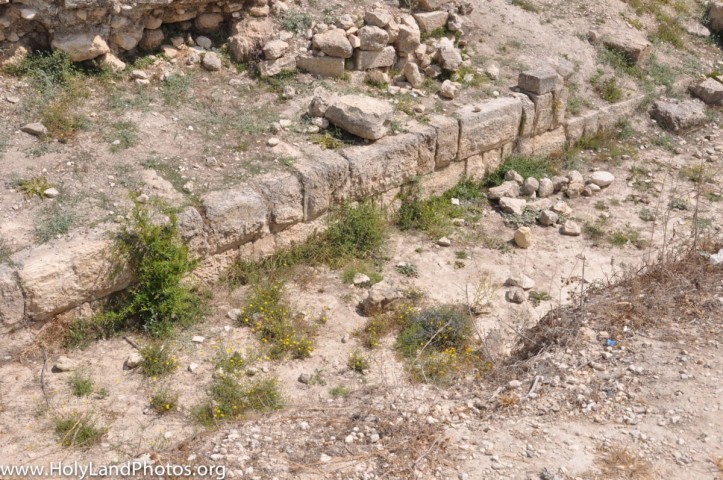
While it was Omri who moved the capital of Israel to Samaria and built the palace on the acropolis, it was Ahab who expanded it, adding numerous administrative buildings. He extended the royal palace using finely dressed ashlar stones in a pattern that may have copied a Phoenician style.2 The royal acropolis was monumental, being 89 X 178 m in size, and covering 4 acres, roughly the same amount of space as an entire town in rural Israel at that time.3 While Ahab was, no doubt, responsible for some of the renovations to the palace, some scholars have suggested that the “Building Period II” phase of the site ought to be attributed to Jehu, rather than Ahab.4
The “Ivory House”
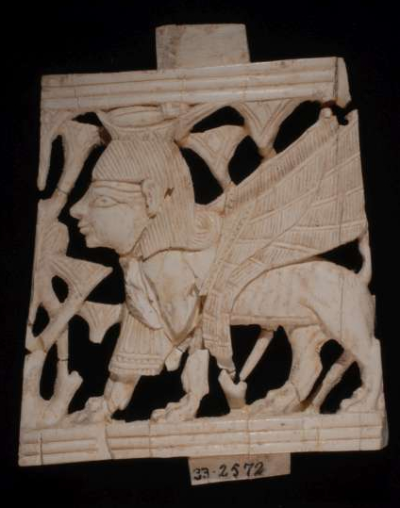
In 1 Kings 22:39, we read of a specific building that Ahab was famous for: “Now the rest of the acts of Ahab and all that he did, and the ivory house that he built and all the cities that he built, are they not written in the Book of the Chronicles of the Kings of Israel?” Scholars have speculated that one of the enhancements which Ahab made to the capital of Samaria was to adorn the palace walls and furniture with ivory decorations such that it became known as “the Ivory House.” When Kathleen Kenyon’s team excavated Samaria in 1932, they unearthed a large collection of carved ivories dating to the Iron Age.5
The Samaria Ivories, as they have come to be known, depict wildlife, plants, mythological creatures, and foreign deities. Because they date to the time of King Ahab, and were discovered near the palace complex, most scholars believe they come from the fabled, Ivory House. While many hold that they were made by the Phoenicians, some scholars are suggesting this needs to be reviewed in light of new studies showing that there was a local tradition of ivory carving in the Southern Levant during the Bronze and Iron Ages.6
Whatever their origin, it is interesting that a significant group of ivories were discovered near the palace, which date to the time the Bible says Ahab was famous for his Ivory House.
The Kurkh Monolith

In 853 BC, the Assyrian king, Shalmaneser III fought against a coalition of western kings near at Qarqar in modern-day Syria. He left a description of the battle on a stele that was discovered in 1861 at Kurkh, near the Tigris river in Turkey. In the inscription on the Kurkh Monolith, he names “Ahab the Israelite” as on of the combatants and claims that he had one of the strongest forces, with 2000 chariots and 10000 soldiers.7 Despite Shalmaneser’s boasts, the battle may have been more of failure than a victory for him (or, at best, a draw), as returned to Assyria immediately after the battle, had no further contact with the coalition, and didn’t return to Israel for another four years.8
While neither Shalmaneser III, nor the Battle of Qarqar are mentioned in the Bible, this inscription is still important for several reasons. First, it is a clear confirmation of Ahab as a king of Israel. Secondly, it testifies to the wealth and power of the Israelite kingdom at the time.9 Finally, it references a historical event that can be dated. Indeed, it was one of the key inscriptions that Edwin Thiele used to construct a chronology of Israel in his book, The Mysterious Numbers of the Hebrew Kings. He writes:
“An exact synchronism between Hebrew and Assyrian history is made possible in the early period of the kings by an interesting correlation of events in Israel and Assyria that begins and ends the twelve-year period of 853-841 B.C. It has already been mentioned that Ahab is listed by Shalmaneser III as one of the kings of the Westland who fought against him in the battle of Qarqar, and we have seen that this battle was fought in the year 853. Therefore, Ahab was still alive and reigning in Israel sometime in the year 853. Shalmaneser also mentions that he received tribute from Jehu during his expedition to the west in his eighteenth year. This would be in the eponymy of Adam-rimani (841). Thus Jehu was already reigning over Israel sometime in 841….the interval between the death of Ahab and the accession of Jehu is exactly twelve years, being made up of the reigns of Ahaziah ,the son and successor of Ahab, and Joram, who was slain and succeeded by Jehu [2 Kings 2:51 & 3:1]….Since the interval between the battle of Qarqar, at which Ahab fought in 853, and the time Jehu paid tribute to Shalmaneser in 841 is also for a period of just twelve years, it is in this period that the reigns of Ahaziah and Joram must have taken place, with 853 as the last year of Ahab and 841 for Jehu’s accession.”10
Jezebel’s seal

One of the most infamous women in all of history was Queen Jezebel, the Phoenician wife of King Ahab. In the early 1960’s a seal that had been purchased on the antiquities market was donated to the Israel Museum in Jerusalem.11 It bears the name Jezebel interspersed around various images. Initially, scholars were hesitant to identify it with Ahab’s wife, in part because Jezebel is spelled slightly differently than in Scripture. On the seal, it is spelled YZBL, while in Scripture it is spelled ‘YZBL (the ‘ represents the Hebrew letter aleph).12 If this were the seal of Jezebel, one would expect to see the aleph, as well as a lamed; it should read L’YZBL, or “Belonging to Jezebel.” Recently, scholars have analyzed the seal and noted that the damaged part at the top of the seal is just large enough to have contained the two missing letters. This, combined with the seal’s impressive size, and the fact that it is filled with Egyptian symbols that were commonly used in Phoenicia at this time, has lead some scholars to believe that this is the seal of Ahab’s wife, Queen Jezebel.13
Naboth’s Vineyard
In addition to his palace at Samaria, Ahab also had a “palace” at Jezreel, about 21 miles north of the capital city. Next to this palace, was vineyard owned by a man named Naboth, which Ahab coveted. Jezebel arranged for Naboth to be killed and Ahab became the owner of the vineyard (1 Kgs 21:1-16).
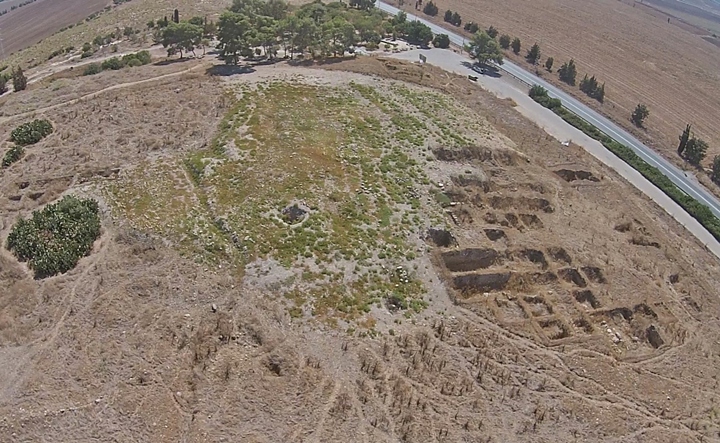
Excavations at Jezreel have identified an Iron Age IIB (900–700 B.C.) military fortress on the upper tell.14 In 1 Kings 21:1-2, we read that Naboth’s vineyard was located near King Ahab’s “palace.” The Hebrew word for palace is heikal, not the word that is normally used for a palace: armon. A heikel is a large, important building of military or religious nature. Jezreel was the place Israel mustered her army, and thus the heikal was likely the fortress of Ahab.15
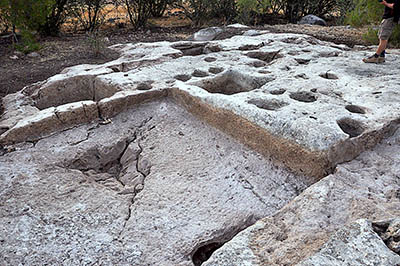
The most recent excavators – Norma Franklin of the University of Haifa and Jennie Ebeling of the University of Evansville – have unearthed an ancient winery cut into limestone bedrock at the foot of Tel Jezreel. Based on comparison with other wineries in the vicinity and the absence of evidence for a beam and screw press (a later invention), it is believed that this is an Iron Age winery.16 Moreover, details in 2 Kings 9 lead to the conclusion that Naboth’s vineyard was located east of Jezreel on the main road, the Via Maris. The Tel Jezreel Expedition unearthed the winery in 2013, and found it east of Jezreel near where the Via Maris would have run. Because wineries were located near the vineyards in ancient times, this may indeed be the remains of Naboth’s vineyard, which King Ahab stole.
Conclusion
The exploits of King Ahab are recorded in four chapters of Scripture (1 Kings 18, 20-22), more than any other ruler of the northern Kingdom of Israel.17 Archaeological discoveries related to King Ahab help provide a background to his life. It is clear that he followed the expansion and building policies of his father, Omri. Moreover, numerous details that are recorded in Scripture have been affirmed in the archaeological record. This helps us understand in greater detail the extent of the northern Kingdom of Israel in the 9th century BC.
Title Photo: Yuber / Wikimedia Commons / Public Domain
Endnotes
1 Bryan Windle, “King Omri: An Archaeological Biography.” Bible Archaeology Report, March 6, 2020. https://biblearchaeologyreport.com/2020/03/06/king-omri-an-archaeological-biography/ (Accessed April 24, 2020)
2 Catherine L. McDowell, study note on 1 Kings 16:29 in ESV Archaeology Study Bible (ed. John Currid and David Chapman; Wheaton: Crossway, 2018), 500.
3 Amihai Mazar, Archaeology of the Land of the Bible: 10,000 – 586 B.C.E. (New Haven: Yale University Press, 1992), 406.
4 Norma Franklin, “Samaria: from the Bedrock to the Omride Palace,” Levant 36, 2004, pg. 201. Online: file:///C:/Users/Owner/Downloads/samariabedrockLevant.pdf (Accessed February 27, 2020).
5 Rupert Chapman, “Samaria, Capital of Israel.” BAR 43:5, (September/October 2017), 30.
6 “The Samaria Ivories – Phoenician or Israelite?” Biblical Archaeology Society. https://www.biblicalarchaeology.org/daily/news/the-samaria-ivories-phoenician-or-israelite/ (Accessed May 5, 2020).
7 Bryant Wood, “Ahab the Israelite,” Associates for Biblical Research. January 2, 2006. https://biblearchaeology.org/research/divided-kingdom/3584-ahab-the-israelite (Accessed May 7, 2020).
8 Clyde E. Fant and Mitchell G. Reddish, Lost Treasures of the Bible. (Grand Rapids: William B. Eerdmans Publishing Company, 2008), 119.
9 Bryant Wood, “Ahab the Israelite,” Associates for Biblical Research. January 2, 2006. https://biblearchaeology.org/research/divided-kingdom/3584-ahab-the-israelite (Accessed May 7, 2020).
10 Ewin R. Thiele, The Mysterious Numbers of the Hebrew Kings. (Grand Rapids: Zondervan Publishing House, 1983), 76.
11 Bryant Wood, “Seal of Jezebel Identified,” Associates for Biblical Research. July 15, 2019. https://biblearchaeology.org/research/people-places-and-things-from-the-hebrew-bible/4450-seal-of-jezebel-identified (Accessed May 9, 2020).
12 Marjo C.A. Korpel, “Fit for a Queen: Jezebel’s Royal Seal.” BAR 34:2 (March/April 2008), 32-37. Online: https://www.biblicalarchaeology.org/daily/biblical-artifacts/inscriptions/fit-for-a-queen-jezebels-royal-seal/ (Accessed May 9, 2020).
13 Ibid.
14 Marek Dospěl, “Naboth’s Vinyard Unearthed at Tel Jezreel?” Biblical Archaeology Society. November 6, 2017. https://www.biblicalarchaeology.org/daily/biblical-sites-places/biblical-archaeology-sites/naboth-vineyard-tel-jezreel/ (Accessed May 11, 2020).
15 Norma Franklin, Jennie Ebeling, Philippe Guillaume, and Deborah Appler, “Have We Found Naboth’s Vineyard at Jezreel?” BAR 43:6 (November/December 2017), 52.
16 Ibid, 53-54.
17 Bryant Wood, “Ahab the Israelite,” Associates for Biblical Research. January 2, 2006. https://biblearchaeology.org/research/divided-kingdom/3584-ahab-the-israelite (Accessed May 7, 2020).

[…] “Archaeological discoveries related to King Ahab help provide a background to his life. … [N… […]
[…] the Queen mother. He further arranged for the murder of “all who remained of the house of Ahab in Jezreel, all his great men and his close friends and his priests, until he left him none […]